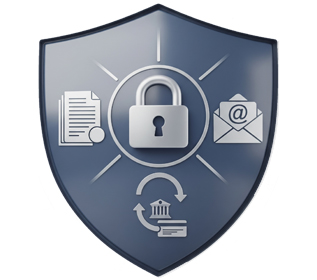As cybercrime becomes more advanced and prevalent, Accounts Payable (AP) operations have emerged as a key vulnerability in many organizations’ financial processes. With increasing volumes of vendor invoices, payment instructions, and sensitive financial data being shared, often over email, the risk of cyber threats, fraud, and data compromise has never been greater.
Why AP Is a Prime Target for Cybercriminals
Accounts Payable involves the disbursement of funds, making it an attractive entry point for attackers seeking financial gain. Common vulnerabilities include:
• Invoices received via email, which can be spoofed or manipulated
• Banking detail updates sent without secondary verification
• Payment instructions that rely on unencrypted communication
• Time-sensitive requests that pressure staff to bypass checks
• Insufficient internal controls or unclear approval hierarchies
Given the repetitive and transactional nature of AP work, even a small lapse can lead to large financial losses or reputational damage.
Common Cyber Threats in AP Processes
1. Business Email Compromise (BEC):
Attackers impersonate vendors or internal executives to send fraudulent payment instructions.
2. Invoice Fraud:
A legitimate vendor’s invoice is intercepted and altered with false banking information.
3. Phishing Attacks:
Emails designed to trick employees into clicking malicious links or revealing login credentials.
4. Social Engineering:
Attackers exploit human psychology by way of urgency, authority, or familiarity to bypass standard procedures.
Best Practices for Securing AP Processes
A secure AP process requires a multi-layered approach that includes process design, technology, employee awareness, and continuous monitoring.
1. Implement Robust Process Documentation
Clearly documented Standard Operating Procedures (SOPs) should govern all AP activities:
• Steps for invoice intake and validation
• Protocols for verifying vendor details
• Approval workflows for different payment types and thresholds
• Guidelines for handling urgent or exception-based requests
Having these in place helps enforce consistency and accountability.
2. Establish Maker-Checker Controls
A fundamental internal control, the maker-checker principle ensures that no payment can be processed without independent review. This reduces the likelihood of errors or unauthorized changes slipping through unnoticed.
3. Verify All Changes to Vendor Banking Information
Before updating any vendor payment details:
• Use call-back verification to confirm changes via a known contact
• Avoid making updates based solely on email communication
• Maintain an approved vendor master list and review it periodically
Fraudsters often exploit this exact weak point in the AP process.
4. Use Secure Payment Platforms
Where possible, payments should be made through secure, encrypted platforms that offer:
• Role-based access controls
• Multi-factor authentication
• Transaction logs and audit trails
• Alerts for irregular activity
Avoid manual or email-based payment processing for high-value or sensitive transactions.
5. Train Employees Regularly
Human error is one of the most exploited vulnerabilities. Conduct regular training sessions to help AP and finance staff:
• Recognize phishing and spoofing attempts
• Understand escalation procedures
• Remain cautious when under time pressure
• Stay updated on emerging fraud tactics
Make cybersecurity part of routine professional development, not just a one-time initiative.
6. Implement a Culture of Verification
Establish an internal culture where verification is encouraged, not bypassed, even in the face of deadlines or seniority. Processes should empower employees to pause, question, and escalate when something feels off.
Monitoring and Continuous Improvement
Security is not a one-time setup, it requires continuous monitoring and refinement. Organizations should:
• Review AP activity for unusual patterns
• Conduct periodic internal audits of payment processes
• Update policies in response to emerging risks
• Evaluate new tools and technologies to improve protection
In the current threat landscape, Accounts Payable can no longer be viewed as just an operational function, it is a strategic risk management area. While no system is completely immune, organizations that proactively implement the right controls, training, and verification mechanisms can significantly reduce their exposure. The cost of prevention is far lower than the cost of recovery.
